Yes, yes, I know, I missed my traditional May 1st write up of the games that I played over the last year, but I wasn’t really feeling up to writing any reviews during that time, so I decided to hold off on making a post. Then, once I was feeling better, I realized that my PS+ was nearing its expiration, so I held off a few more weeks so that I could squeeze a couple more games into this list.
Update: Since the reviews ended up taking longer to jot down than expected, I’ll be splitting this post into two. The second half, consisting of January - July will be posted next month.
(May 1, 2022 - December 31, 2022)
So, this year saw a lot of PS4 games completed, largely for two reasons; The first being a good deal on Gamefly, giving me the chance to play some new-ish titles for extremely cheap; and second, there was the decision to cancel my PS+ subscription, which gave me the much needed motivation to play through games that were set to expire from my library in June
-
Horizon: Forbidden West
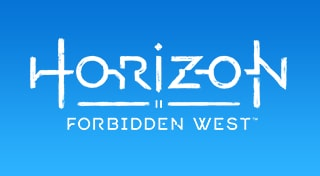
-
Kena: Bridge of Spirits

-
Wild at Heart

-
Borderlands: Tiny Tina
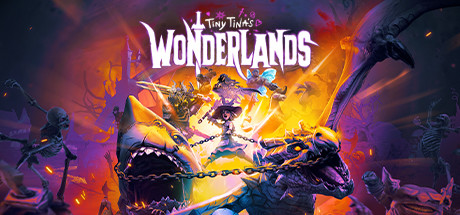
-
Supraland: Six Inches Under
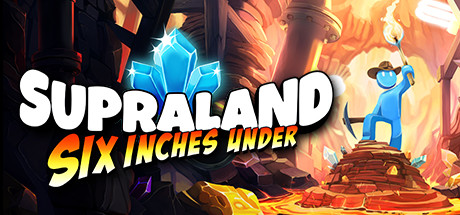
-
Spider-Man: Miles Morales
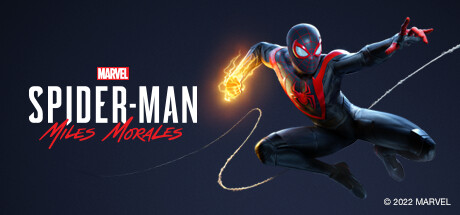
-
Guardians of the Galaxy
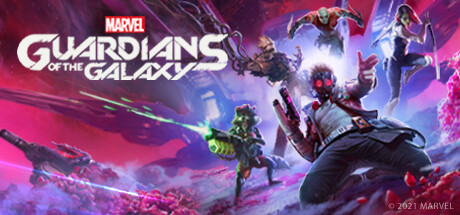
-
Little Big Workshop

-
Bugsnax

-
Inscryption

-
Luna's Fishing Garden

-
Lost in Random
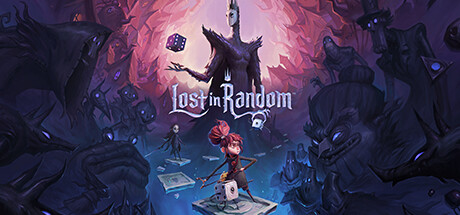
- Horizon: Forbidden West - I can't place exactly what it was about this game, it could have been the sum of multiple nitpicks, but despite the larger scale, the QOL improvements, and the deeper skill tree, the game just seemed to underwhelm compared to the original. Where Horizon: Zero Dawn felt fresh and new, Forbidden West more or less just treaded the same ground, only somehow worse. Taking down the large dinobots was no longer enjoyable, with some of the best weapons (namely the ropecaster) completely nerfed to the point of being useless. And in their place, dozens of modifications to be placed on other weapons. It sounds like an improvement, being able to fully customize each weapon to your liking, but what it ends up doing is completely trivializing the combat. Machines that previously required systematic targeting/trapping, now just needed a few shots with a Bow. Trapping became an afterthought to the swiss army knife Bows and Blasters.
This is not to say that the entire game was a slog or unenjoyable, as the locations and set pieces were fun to explore (especially Vegas). Even the main story, which had its rough patches, wasn't all bad. Aloy's character actually managed to grow as a person... Slightly. Her biggest flaw of needing to be the smartest person in the room (even one with an AI super computer) is still strongly prevalent, but she does eventually do away with some of her stubbornness and learns to accept help from others. And while I was disappointed at how simple combat became, I can't deny that creating an overpowered weapon that could melt Apex Thunderjaws in two hits was rather satisfying. - Kena: Bridge of Spirits - A beautiful game with a split personality. On the surface, the game looks and feels like a Pixar movie that got turned into a video game. The little Soot sprites hiding in various nooks and crannies for you to find, dozens of collectible hats that you can then equip onto them, the serene atmosphere and calming music. Even the combat portions are simple enough that they never truly pose a challenge. All together, it seems like the perfect fit for a younger audience. That is, until you complete a chapter and are faced off against the area's boss. Then, not only does the tone of the game shift to something a bit darker, but the combat also gets a spike in difficulty. It is no longer something that can be easily breezed through, but requires perfect timing and concentration. This game is that of an angler-fish - luring you in with the beautiful lights, only to bare its fangs once you get in close.
- Wild at Heart - Indie Pikmin, enough said. As someone who adored the original Pikmin, I'm always on the look out for games with a focus on horde-management (ex: Overlord), but over the last few decades, that genre has been incredibly underrepresented, with more games seeming like cheap knockoffs (ex: Hotel Transylvania 3) than naught. The Wild at Heart, however, managed to become one of the few exceptions, taking formula that made Pikmin so great, shaping it into its own. It still featured the creature-specific puzzles, the weighted items that needed X number to be carried, and the ticking clock towards lights out, but it also introduced plenty of other features that would fit perfectly with an official Pikmin title.
The biggest feature of which was the crafting system. Now a standard in most games, crafting is something that seems right at home in this style of game. You are already collecting plenty of items to take back to your home base, so why not attempt to create something to speed up your movement, or upgrade your light source. With the right (or wrong) combination, you might even create an explosive that could aid your pik...Sprites in combat/puzzles. Multiple NPCs are also scattered around the world to help aid your adventure, and while the story leaves much to be desired, the upgrades you get from said NPCs make it worth the effort. These features and others show that the devs wanted to do more than just copy the original, but to modernize and compliment it, and for that I approve.
- Borderlands: Tiny Tina's Wonderland - This will probably be a controversial take, but this might tie Borderlands 2 as the best Borderlands game. Borderlands 3 had some great quality-of-life improvements for the franchise, but the story ended up dragging it down to make it the worst overall. Tiny Tina took those new features, expanded upon them, and then had a great story to go along side it. Between the Overworld, the new take on grenades (now "spells"), and the ability to multi-class, TTW has managed to give the series a much needed coat of fresh paint. Playing as the Spellshot, specifically, made it feel like an entirely different game, with the ability to play around with two of those new spells at any given time.
- Supraland: Six Inches Under - A great Metroidvania-esque puzzle game that just didn't feel as interconnected as the original. I had high praise for the first Supraland, and much of those positives can be reused here as well - great level design, constant upgrades to keep things fresh, and fun/challenging puzzles. The biggest difference between the two being that, where the first game made an effort to wrap everything together, Six Inches Under felt more like branching paths from a single hub. That's not to say that there is anything wrong with that design choice, but much in the same way that Dark Souls 2 was to Dark Souls 1, it does lose that sense of accomplishment when you've unlocked a new shortcut to a previously trekked path.
- Spider-man: Miles Morales - Miles Morales is a complete upgrade over Peter Parker's Spider-man in nearly every regard. Starting with the combat, Miles' new Venom abilities give him far more toys to play around with. Not only do the hits feel stronger, but being able to chain/juggle enemies into Venom punches provides for hours of fun. In stealth scenarios, the Camouflage becomes a fun little addition to the tool belt, allowing for a far more active approach to the ghost-style gameplay. Then the story, being a much shorter experience, is able to keep things contained and succinct. It also has the benefit of starring a character who hasn't had multiple films about him, allowing for certain story elements to not be completely obvious (Looking at you, Dr. Otto Octavius). As a bonus, I don't think I could hate on a game that featured Spider-Cat.
- Guardians of the Galaxy - A well-done story with combat that got a bit stale. One of the biggest flaws, outside of the repetitive combat, was the worry that you would proceed into the next area before the previous bit of convo had finished. I don't know how many lines of dialogue this game had, but even after idling around after each section, I still managed to miss a good chunk of the interactions. Which, being the best part of the game, is what makes those missed moments all the more painful. In fact, there was one point I force-quit the game just to reload a save to hear a bit of story that got interrupted for walking too far. That dialogue is what kept me from dropping the title. Getting to the combat though, there wasn't really all that much to it. While the team combo was fun to see the first couple of times, after the dozenth time, the animation felt like more of a chore than anything else. Trying to match the correct response to each Guardian's grievance mid-combat became an unnecessary distraction that just ruined the flow of the combat. Now, I will admit that a few of the songs that played after the huddle were a delight to hear... But not at the cost of going through it over and over again.
- Little Big Workshop - A true simulation of what its like to run a business - You start off small with just a Mom & Pop business, with hopes and dreams to become large enough to put Amazon out of business, only to be crushed under the sheer pressure of it all by the end. Oh, not because of the difficulty of the game, but because once you start to get large, the PS4 can no longer handle the number of requests it receives and becomes incredibly glitchy, until it ultimately crashes every 10~ minutes. Granted, the PC version may run smoother, but I can only review my personal experience of the game, which was painful late-game.
When starting out, the game is actually a lot of fun, and in some ways, hearkens back to the days of the Sims, as you renovate the workshop to be your own little playhouse. Watching it grow and evolve as you earn more money and unlock new "toys" to build more and more advanced goods. It becomes rather cathartic up until mid-game, when they start throwing curve-balls at you, with things like spies, rats, and mold that need to be dealt with to prevent worker unrest. Even then, it's no more of a challenge than a slight annoyance. Though, for players who just want to experience the game without these distractions, the devs did see fit to put in the option to disable them, which is a major plus that can help keep the flow of the game running smooth. Once you reach late game, however, is when everything starts to crash down (no pun intended).
Somewhere around mid-to-late game, once you have a few dozen workers, pathing starts to become rather glitchy, and no combination of storage-priority seems to fix it. Workers who are supposed to drop off specific materials at one location will opt to drop them off at a completely different location that becomes incredibly inconvenient for other workstations (ex: The far end of the shop), causing delays, and often-times missed deadlines. After a while, I ended up re-renovating much of my workshop to have wide-open areas of storage, and even that only worked for so long, until the wrench fell back into the code breaking things all over again. However the "priority" system was supposed to work, clearly stopped functioning once I hit a certain threshold in the game. The AI then continued to devolve, as eventually bottlenecks started to form where they shouldn't have, with my entire staff just chilling in the many break rooms. Not a single station being used. If I didn't know any better, I'd say they had all staged a strike. The best I could figure, a specific material needed for a job was stuck in the storage somehow, causing that build to be suspended, as well as every other un-related job. Breaking down the shelves allowed for the material to finally be reachable, but the process started all over again for the next part. It was a cycle that required yet another unnecessary renovation of the storage area.
Things only got worse from there, as once I unlocked the final few parcels of land to build my workshop, the game began to periodically crash, increasing in frequency the more workstations I built. So what had originally been a dream of building a workshop that filled every inch of the table, now became a nightmare of constant crashes. Crashes, that if they happened during an auto-save, would corrupt the save (which happened multiple times), resulting in a loss of a good 15-30 minutes of work. By the end, I had to break down a good 75% of my shop, leaving only the bare essentials and large amounts of open air, just to finish the final challenge.
- Bugsnax - Let's talk about Bug Snax, and how it is everything I wanted out of a Pokemon Snap game (from a gameplay perspective). In the original Pokemon Snap, your ultimate goal was to capture (photograph) every pokemon, sometimes even requiring you to throw food and pester balls to get the less cooperative ones out of hiding. Bugsnax acts in much the same way, trading out apples for flavored sauces, and the camera for a net, but still challenging you with figuring out what exactly is needed to get each name-loving monster into your pocket. From a creature-collecting perspective, this game manages to hit the nail right on the head - no need to level them up, or have them fight each other, it is just a simple puzzle game with cute critters on the surface. My only wish was that Gramble's barn was bigger so that more of these delectable creatures could be on display.
As for the story, it does present itself as a mystery, so I will avoid spoilers, but the overall writing is a mixed bag. It isn't the most subtle about the mystery, and some of the Grumpuses tend to be more annoying than loveable. Even if there is depth to them, discovering why certain characters act a certain way, it doesn't exactly excuse their behaviors. Thankfully, there are only a handful of those types, and you don't technically need to do all of their side missions.
- Inscryption - Sadly, spoilers were abound when this game first came out, and I was unable to avoid getting that knowledge thrust upon me. Thankfully, the experience wasn't completely ruined, as the rest of the game still held up incredibly well. Learning the various mechanics and synergies throughout was a blast, and even when the RNGod wasn't on my side, it never felt frustrating. I won't go into too much detail, to spare others from being spoiled as I was, but suffice to say I thoroughly enjoyed my time with it, and fully intend to revisit it at some point for the NG+ patch that was released.
- Luna's Fishing Garden - Despite the overwhelming positive reviews it has on steam, this game just did not click with me. Admittedly, I was expecting something completely different going in, but even knowing that it is more collect-a-thon than farming-sim, I'd still say it was rather shallow. Sitting at about 4-5 hours long, you repeat the same actions over and over - NPC tasks you with collecting X number of fruits/fish/feathers/whatever > Gather said items via waiting for them to grow/playing the Stardew Valley fishing minigame > return to NPC > Repeat. It's fine if you just want something to pass the time, but don't go in expecting any sort of depth to the gameplay.
- Lost in Random - First thing's first, do not be ashamed to play this game on easy mode - I know I don't. Normally I opt for the harder difficulty in games, but when the key difference is the tanky-ness of the enemies and you have to go through a lot of them, easy mode just helps keep the flow of the game going. There were some street battles that would last 15+ minutes on normal, simply because more and more waves kept piling in after the previous enemies had been defeated. They weren't necessarily tough, especially once you learn how to properly dodge their attacks, it just became monotonous. That aside, the combat itself was a lot of fun, and something I would like to see utilized in more games. It is very similar to Kingdom Hearts: Rechain of Memories, in that you are fighting in real-time with a deck of card you cycle through. Where it stands out, however, are the cheat cards, which you can chain into giving you bigger hands each draw. With certain combos, you can essentially guarantee getting the hand you want every single time.
The gameplay isn't the only place this game flourishes either, as the world itself is also well crafted, both from a lore perspective and an artistic one. The Tim Burton influence is clear from the onset, but they manage to mold it into their own, without ever feeling like a knockoff. Then, there are multiple districts, each fleshed out with their own history and unique cast of characters, giving you the perception that it is a living world. One that could be explored well past this one game.
Probably should’ve waited a bit longer until you actually had everything written out before posting. I’m not sure how many people here are willing to scroll back through the archives to check if any previously-read posts got edited.
Fair enough, I’m hoping to get the rest written up in the next few days though. It was one of those tasks that was so overwhelming (over 25 reviews), I knew I’d procrastinate if I didn’t get at least some of it out the door.